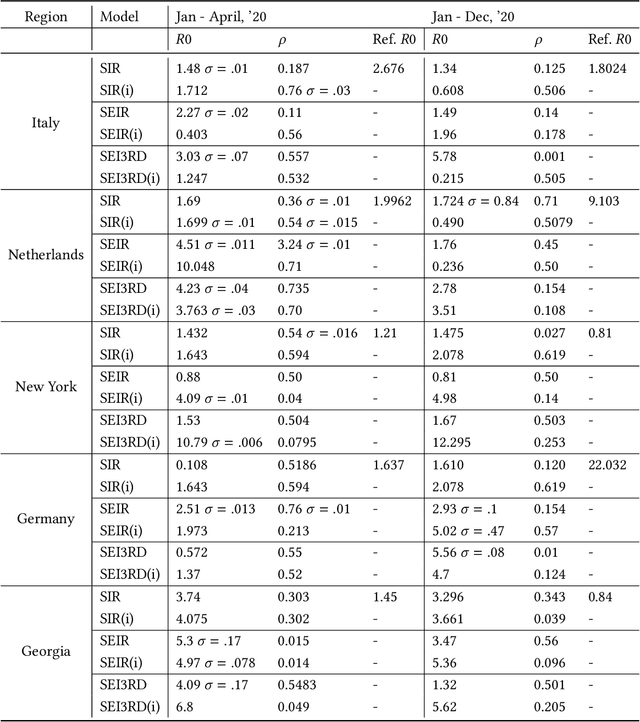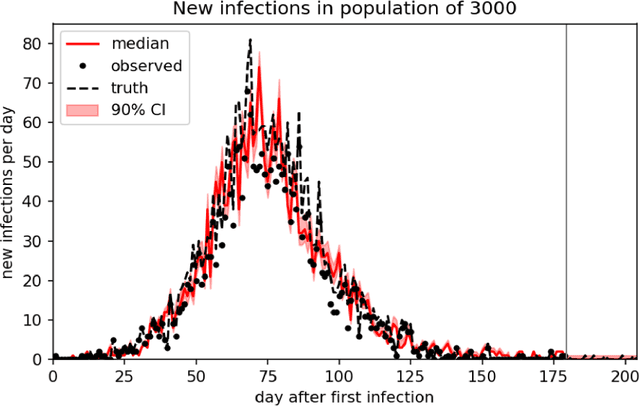Compartmental Models for COVID-19 and Control via Policy Interventions
Paper and Code
Mar 06, 2022



We demonstrate an approach to replicate and forecast the spread of the SARS-CoV-2 (COVID-19) pandemic using the toolkit of probabilistic programming languages (PPLs). Our goal is to study the impact of various modeling assumptions and motivate policy interventions enacted to limit the spread of infectious diseases. Using existing compartmental models we show how to use inference in PPLs to obtain posterior estimates for disease parameters. We improve popular existing models to reflect practical considerations such as the under-reporting of the true number of COVID-19 cases and motivate the need to model policy interventions for real-world data. We design an SEI3RD model as a reusable template and demonstrate its flexibility in comparison to other models. We also provide a greedy algorithm that selects the optimal series of policy interventions that are likely to control the infected population subject to provided constraints. We work within a simple, modular, and reproducible framework to enable immediate cross-domain access to the state-of-the-art in probabilistic inference with emphasis on policy interventions. We are not epidemiologists; the sole aim of this study is to serve as an exposition of methods, not to directly infer the real-world impact of policy-making for COVID-19.
 Add to Chrome
Add to Chrome Add to Firefox
Add to Firefox Add to Edge
Add to Edge